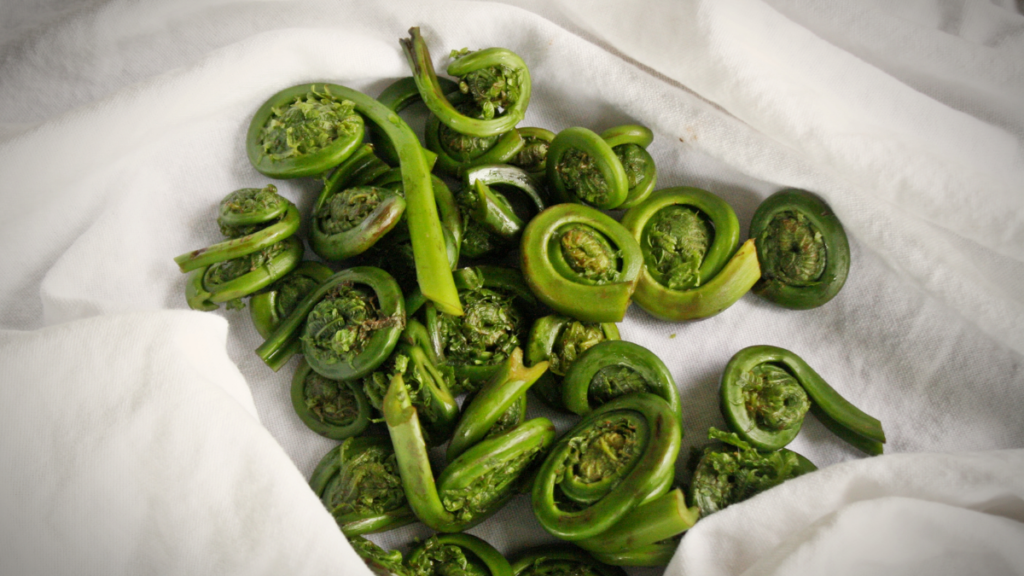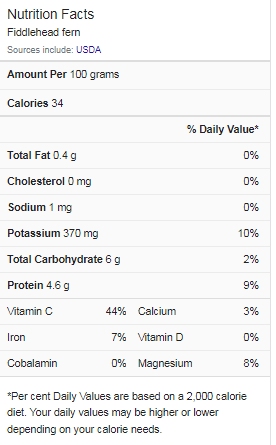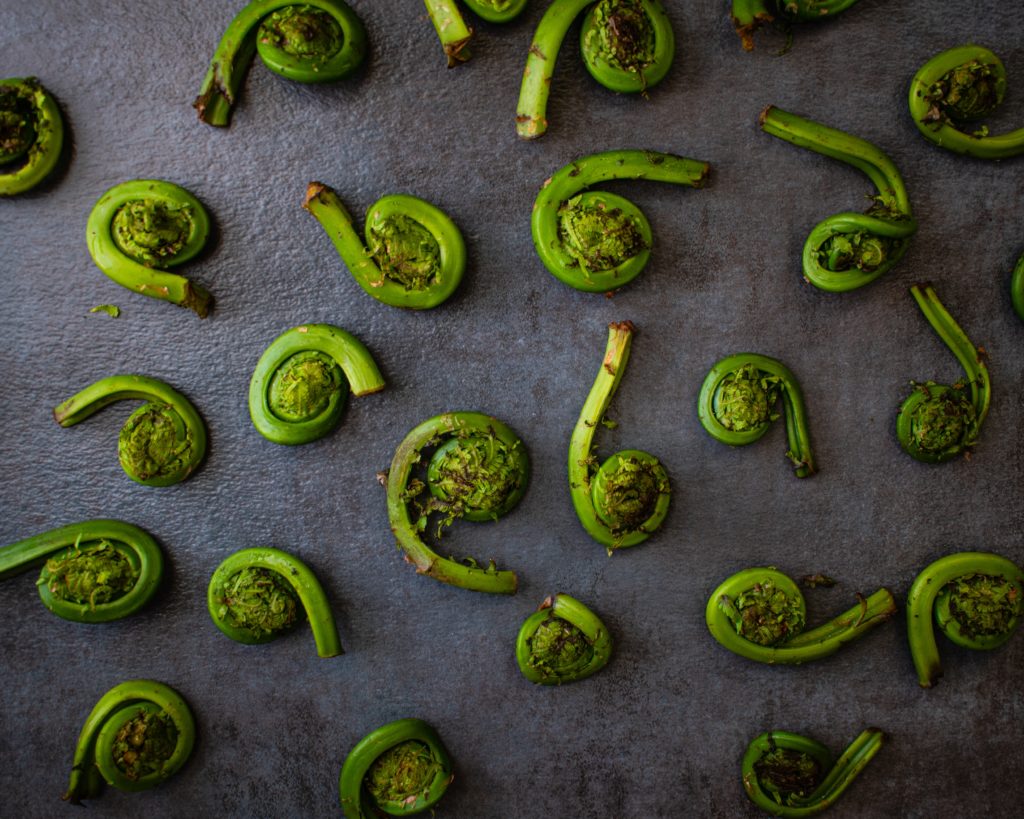Fiddlehead fern is a nutrient-dense vegetable. The fern’s young, furled frond is picked and eaten as a vegetable. Read on to learn more about the nutritional value of fiddlehead ferns. For vegetarians, this is an essential veggie! The nutrition statistics below will assist you in determining which sort of fiddlehead is best for your diet. A cup of steaming fiddleheads contains all of the nutrients your body requires.
For persons who are anemic, the fronds are an excellent source of iron and copper. Vitamin C, zinc, and beta-carotene are also present. All of these nutrients are necessary for your well-being. On the other hand, fiddlehead ferns are high in calcium, which is a crucial vitamin for people who suffer from bone loss. They are pretty nutritious for the price, and they can be consumed raw or cooked.
Fiddlehead fern is a healthy vegetable that anyone may eat. Fiddlehead fern provides omega-3 and omega-6 necessary fatty acids and contains 34 calories per 100 grams. They’re also high in carotenes, and vitamin A. Fiddlehead fern offers about 120 percent of the required daily intake of vitamin A in a 100 g serving. This vitamin is essential for vision and may help prevent lung cancer. The calories in fresh fronds are 34 per 100 g. They are high in fiber and aid in the prevention of infection. They also have adequate vitamin A, vitamin C, and protein levels.
Fiddlehead Fern Nutrition Facts
Fiddlehead fern has a lot of nutritional value. Fresh, uncooked fronds are low in calories and high in antioxidants and vitamins that are good for your health. The necessary fatty acids omega-3 and omega-6 are abundant in this fern. Salads and stir-fried foods benefit significantly from it. A crispy pan-seared fish and a plate of fiddlehead fronds mixed in melted butter are specialty dishes served in Boston restaurants.
Are Fiddlehead Ferns Healthy?
Fiddleheads are high in potassium, iron, antioxidants, and omega-3 fatty acids, making them highly healthful. When it comes to eating them, there are a few options. Ostrich ferns should never be eaten fresh since they contain a trace amount of poison. (Not that you’d want to eat them raw; they’re pretty bitter.) Cook for a minimum of 5 minutes.
Is It Safe To Eat Fiddleheads?
While the green vegetable is safe to consume, Health Canada warns that if not properly prepared and cooked, fiddleheads can cause disease. “Eating raw or undercooked fiddleheads can induce diarrhea, nausea, vomiting, stomach cramps, and headaches,” according to a Health Canada warning released on Thursday.
Is Fern Beneficial To One’s Health?
This evergreen plant helps to remove dangerous pollutants from the home and enhances humidity by naturally restoring moisture to the air. The Boston Fern is thought to provide actual health advantages to those who suffer from dry skin, irritably dry noses, or throats due to its air-purifying characteristics.
Is The Iron Content Of Fiddleheads High?
Fiddleheads have antioxidant properties, are abundant in iron and fiber, and contain omega-3 and omega-6 fatty acids. Fiddleheads are high in potassium, iron, antioxidants, and omega-3 fatty acids, making them highly healthful. When it comes to eating them, there are a few options. Ostrich ferns should never be eaten fresh since they contain a trace amount of poison.
What’s The Difference Between Fiddleheads And Ferns?
Fiddleheads are ferns that aren’t yet ferns. They are the furled-up stage of ferns in the spring that are just starting to sprout through the earth. They develop and unfold fast as they emerge from the fertile, damp April soil, sometimes only lasting a few days in their furled-up condition Fiddleheads are the beginnings of all fern leaves, and some types of fiddleheads can be cooked and eaten as a pleasant spring treat.
Is Fiddlehead Beneficial To Diabetics?
Fiddlehead ferns are a tasty and attractive vegetable. Fiddleheads, for example, are tundra plants that may help protect you and your family from cancer, heart disease, and diabetes. Feast on Organic Tundra Greens at Your Leisure! Fiddleheads are delicious Fiddleheads are also high in potassium, vitamin K, folate, and iron and are a good source of these nutrients. According to health officials, fiddleheads should be cooked for at least 10-15 minutes.
The nutrition information for fiddlehead fern is accessible in both frozen and non-frozen versions. Despite their unusual look, they are high in antioxidants, vitamins, and vital fatty acids omega-3 and omega-6. Fiddleheads also contain a lot of carotenes and vitamin A, which is a plus. A hundred grams of fiddleheads provide 120 percent of the daily vitamin A requirement. This natural antioxidant aids in preventing lung cancer and may also guard against cancer of the oral cavity.
Fiddlehead fern has roughly 34 calories per 100 g serving. Antioxidants and other nutrients are abundant in the fronds. Fiddlehead ferns are low in fat and sodium and are nutritious vegetables. As a result, they’re a terrific option for vegans and those looking to eat vegetarian-friendly dishes. Omega-3 and omega-6 essential fatty acids are found in these fronds, important for heart health and preventing heart disease.
Conclusion
Fiddlehead ferns are a one-of-a-kind and nutrient-dense veggie. Fiddlehead ferns have 34 calories per 100 grams and are a substantial source of antioxidants. They also contain vital fatty acids, omega-3 and omega-6, and antioxidants that are good for your health. Carotenes and vitamin A are abundant in the fronds. Fiddlehead ferns have twelve times the necessary amount of vitamin A in 100 grams. These two vitamins are necessary for vision and may aid in the prevention of cancers of the lungs, mouth, and throat.
Fiddlehead fern nutrition facts show that it is high in fiber and contains various nutrients. The fronds are abundant in vitamin A and carotenes, with about 120 percent of the daily requirement. They are necessary for proper vision and cancer prevention. They include a little quantity of B-complex vitamins as well. You’ll have lots of fresh fiddleheads if you grow your fronds. Fiddlehead fern nutrition data reveal that they are low in fat and high in nutrients. Fiddlehead ferns’ curly fronds are abundant in carotenes, which protect against cancer. The fronds are high in nutrients.




